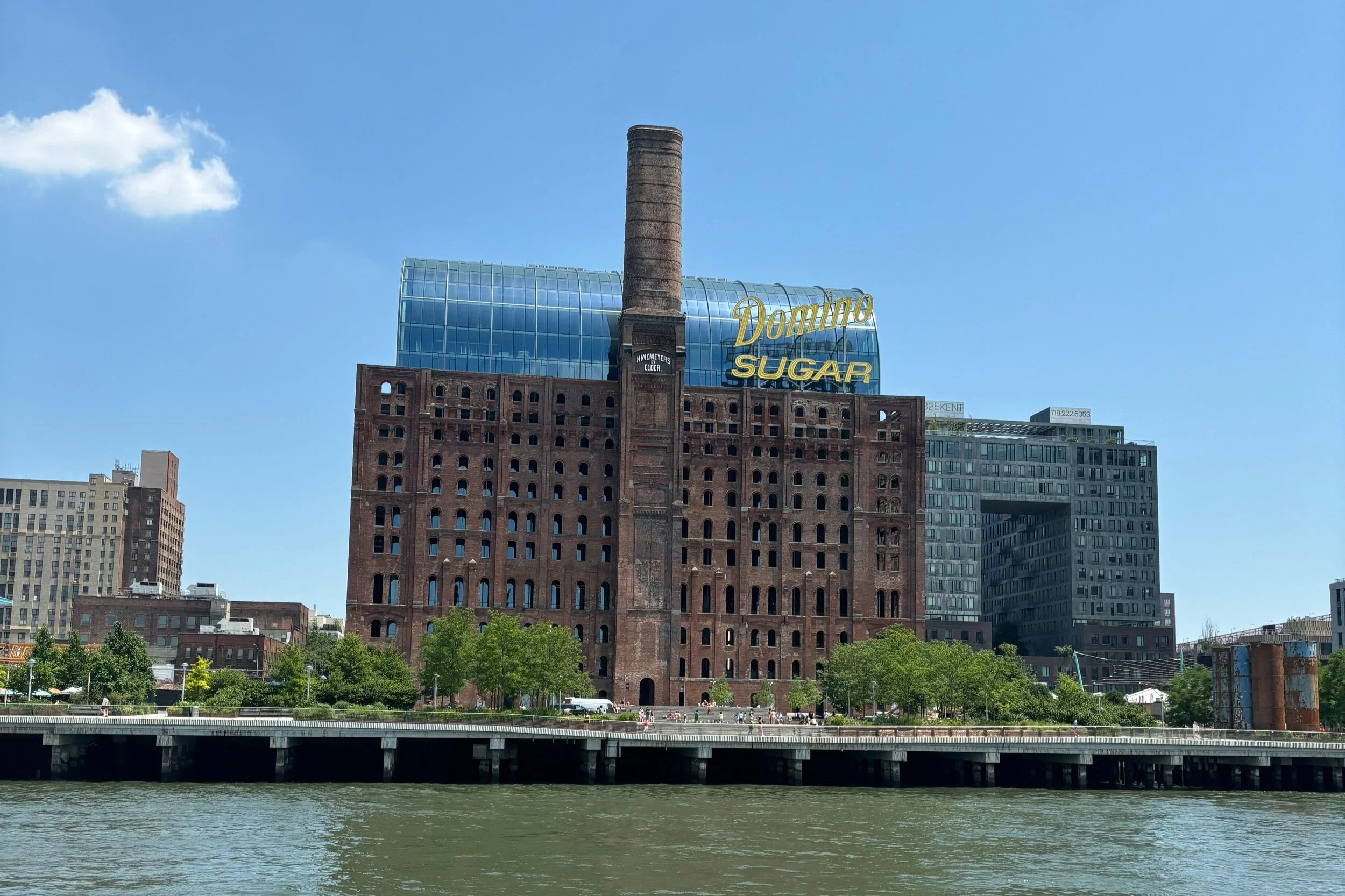A Deep Dive Into The Domino Sugar Factory’s Renovation
Photo By The Empire City Wire
The Factory’s Decline
The decline of the Domino Sugar Factory can be traced to a combination of industrial changes, economic pressures, and regulatory challenges. In the sugar industry, significant shifts in production and processing techniques rendered older factories like Domino less competitive. The global supply chain evolved, and technological advancements meant that newer refineries could operate more efficiently.
Market competition also played a crucial role. The rise of international sugar producers and more modern refineries created an environment where maintaining profitability became increasingly difficult for Domino. Economic factors exacerbated these challenges. The costs associated with operating a large factory in New York City, including labor, maintenance, and energy, steadily increased, squeezing profit margins. Fluctuations in global sugar prices further narrowed these margins, making it harder for the factory to remain viable.
Regulatory and environmental pressures added another layer of difficulty. Stricter environmental regulations required substantial investments in waste management and emissions control, which imposed additional financial burdens on the factory. These cumulative factors led to the gradual decline of the Domino Sugar Factory, ultimately resulting in its closure.
Source: Squarespace/ Unsplash
Renovation And Preservation
The renovation of the Domino Sugar Factory in Brooklyn is a striking example of blending historical preservation with modern development. The project focuses on maintaining the historical integrity of the 19th-century landmark while introducing contemporary elements. The original factory building, with its distinctive brickwork, smokestack, and large arched windows, has been meticulously restored to preserve its iconic facade and architectural features.
The redevelopment has transformed the site into a vibrant mixed-use space, incorporating residential, commercial, and office areas. A significant number of new residential units have been added, many of which are designated as affordable housing. Ground floor retail spaces and office areas in some of the new buildings bring modern amenities to the site.
Renowned architectural firms, including SHoP Architects and Two Trees Management, have led the design efforts, seamlessly blending the old with the new. The result is a dynamic development that honors the past while looking towards the future, creating a space that serves both the local community and the wider city.
Public Access
Emphasizing sustainability and innovation, the renovation includes the creation of Domino Park along the East River. This green space provides recreational areas for the community and connects the development to the waterfront. The project incorporates sustainable design principles, such as green roofs, energy-efficient systems, and the use of sustainable materials to minimize environmental impact.
Public access is a key feature of the renovation, with Domino Park and other public spaces ensuring that the community benefits from waterfront access and recreational facilities. The development also includes interpretive elements that celebrate the history of the sugar factory and its significance to Brooklyn’s industrial heritage.
Source: Squarespace/ Unsplash
Wrap Up
The renovation of the Domino Sugar Factory stands as a testament to the harmonious blend of historical preservation and modern urban development. By meticulously restoring the iconic features of this 19th-century landmark while integrating contemporary residential, commercial, and recreational spaces, the project breathes new life into a pivotal piece of Brooklyn’s industrial heritage.
The inclusion of sustainable design principles and public green spaces like Domino Park highlights a commitment to environmental stewardship and community engagement. This transformation not only honors the factory's storied past but also paves the way for a vibrant and inclusive future, ensuring that the Domino Sugar Factory remains a cherished landmark for generations to come.



